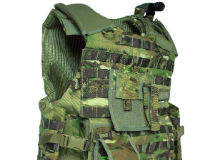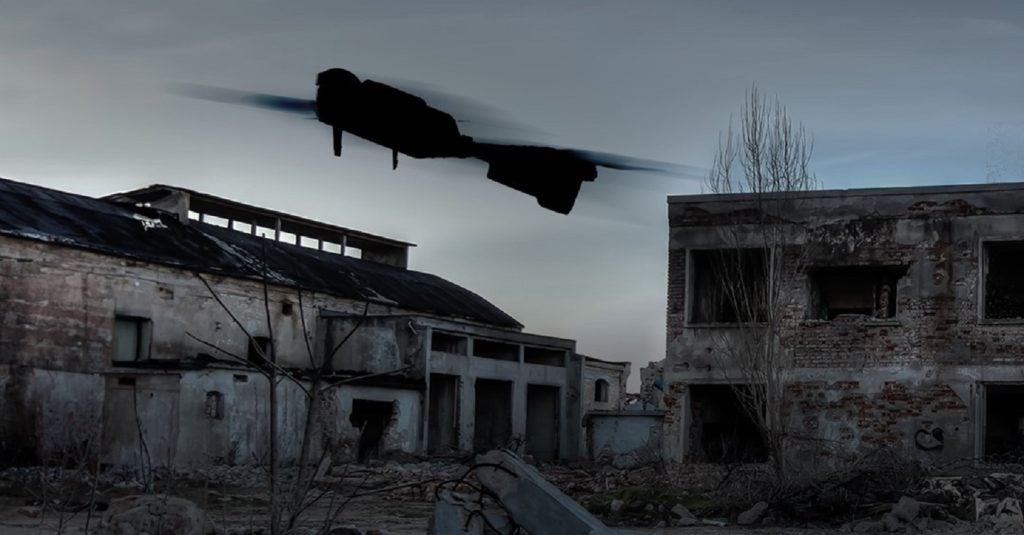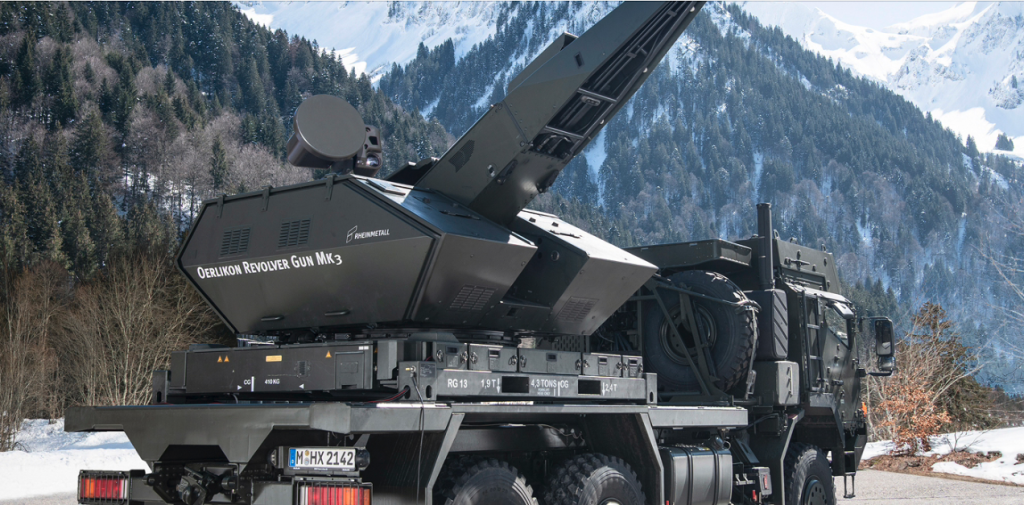
For the soldier on the front line, power is a constant battle. With lethality and surveillance comes a struggle with burden and, when you consider that a typical soldier in a 35-man platoon embarking on a 36-hour patrol carries some 12kg in power alone, it is easy to see why reducing the weight on the individual dismounted close-combat soldier is a key focus for the UK’s Ministry of Defence (MoD).
The burden of essential power sources was addressed in 2010 when commanders in Afghanistan appealed to the MoD to lighten
the load that soldiers carried on a day-to-day basis. Following the approval of an Urgent Operational Requirement in 2010, the soldier portable charger (SPC) – which takes energy from used batteries and transfers it into a soldier’s spares – was developed, along with weight-saving batteries and solar panels.
Since then, the development of equipment in the British Army has been nothing short of groundbreaking. In July last year, the Individual Capability Group (ICG), which procures and supports equipment for the individual soldier within the Defence Equipment and Support (DE&S) procurement agency, teamed up with the Defence Science and Technology Laboratory (DSTL), a trading fund of the MoD, to develop composite armour-plating and new ways of reducing the size of batteries, including woven fabrics that can hold an electric charge. Then, in April 2012, lightweight uniforms with e-textiles – electrically conducting yarn that provides a central, single power source – were showcased by Intelligent Textiles at the Department for Business, Innovation and Skills event organised by the Centre for Defence Enterprise, part of DSTL.
Meanwhile, in October, a contract was awarded by DSTL to OXIS Energy and LINCAD for the development of rechargeable polymer lithium sulphur batteries – all in the name of reducing the burden on the dismounted soldier without reducing effectiveness.
Equipment integration
Reducing the burden on the combat soldier is also a core reason behind recent changes to the ICG, located at the MoD’s Abbey Wood headquarters. The reorganisation, which came about following a review by Brigadier Mark Gaunt, who joined as head last year, saw the group being renamed Soldier Systems Programmes in October, while its four teams – Dismounted Soldier Systems, Integrated Soldier System Light Weapons, Photographic and Batteries, and Personal Combat Equipment – were replaced with a single team led at a one-star level.
See Also:
Central to the ICG restructure was the ‘soldier as a system’ concept, in which the soldier is the centrepiece of the equipment. Brigadier Gaunt, who has served in Afghanistan, Iraq and the US, says: "The soldier is seen not merely as a user of isolated pieces of kit, but as the centrepiece of a set of integrated equipment that enables him or her to function optimally.
How well do you really know your competitors?
Access the most comprehensive Company Profiles on the market, powered by GlobalData. Save hours of research. Gain competitive edge.

Thank you!
Your download email will arrive shortly
Not ready to buy yet? Download a free sample
We are confident about the unique quality of our Company Profiles. However, we want you to make the most beneficial decision for your business, so we offer a free sample that you can download by submitting the below form
By GlobalData"In this way, the soldier is a platform, equivalent to a ship or an aircraft, and items of equipment require integration with each other and the platform."
The former REME officer says the creation of Soldier System Programmes was crucial in order to address challenges faced by the group in reducing the burden of soldiers.
"It is only through the delivery of the ‘soldier as a system’ that the burden can truly be tackled," says Gaunt. "Creation of a single post responsible for delivery of soldier equipment means that the integration required of the soldier’s equipment can be tackled coherently."
While the changes are unlikely to be immediately felt by the soldier on the ground, he adds: "Hopefully, we have further enhanced the process by which [the soldier] is equipped with key capability."
Soldier System Programmes
A newly formed office within Soldier System Programmes, along with a reduction of autonomy in the group, are also set to play a big part in increasing emphasis on the ‘soldier as a system’ idea.
Led by Colonel James Daniel, the programme office will focus on facing the customer and dealing with the planning of equipment, while the delivery group will concentrate on project management, and equipment delivery, support and integration. The delivery group will operate in four domains: surveillance and target acquisition, command and battlespace management, lethality and survivability, which will each be managed by a project manager working across the entire procurement cycle.
"I am keen on the concept of establishing a delivery group and a programme office that are distinct, but work closely together in one team," Gaunt says. "The programme office is focused on synchronising future plans, while the delivery staff need to be able to focus on delivery."
While the aim of the restructure was not to reduce staff numbers, Gaunt – who heads a team of just over 100 civilian and military staff – says it now means the group is well placed to meet future challenges, including reductions in staffing levels over the next few years, which are likely to affect DE&S as a whole.
Man-worn power and data concept demonstrators
With a focus on reducing burden to the individual dismounted close-combat soldier, Soldier System Programmes is currently considering man-worn power and data concept demonstrators, which have been developed over the last two years by BAe Systems and Cosworth, both leading suppliers of defence technology in the UK.
The soldier-worn demonstrator system developed by Cosworth, alongside technologies from BMT Defence Services, CQC, Martec interconnect solutions, TE Connectivity and Ultra Electronics, allows adaptive control of the power flow through the clothing, enabling batteries to be recharged using power from any available power source, such as a vehicle or a solar panel.
Using a single high-speed USB2.0 wiring system integrated into an enhanced combat body armour vest (known as Osprey, and already being used by soldiers), the demonstrator does away with exposed cables and snagging, reducing overall system complexity.
The importance of the development of the Cosworth demonstrator and BAe Systems’ technology was to understand what system requirements were needed, as Gaunt explains. "These early-stage demonstrators will allow the department to make an informed decision on the concept."
Development of fuel cells and power architecture
Speaking at Soldier Technology in May 2011, Marcus Bruton, head of the Soldier System Programmes’ delivery group, outlined the objectives of the then ICG regarding the reduction of weight, including research by the Programmes & Technology Group, part of DE&S, to develop a fuel cell using sodium borohydride (SBH) as the fuel, which could result in significant weight savings.
Now in Phase II of the project, Gaunt says fuel cells are still part of the research on the soldier system. However, considering the challenges that could arise from using fuels other than diesel – such as potential difficulties in transporting it to the frontline – the case for SBH fuel cells is very much in the early stages.
"Fuel cells requiring fuels other than diesel would need to make an extremely compelling case," he says.
Research into power architecture has also formed part of Phase II, with the options – including a zonal approach with a power system for each of the head, torso and weapon areas – still undergoing examination by the MoD. "Zonal power is still being considered and may be the most appropriate way forward, although any decision on this way forward will not be for a number of years yet," Gaunt says.
Concentrating on increased effectiveness
While the direction of Soldier System Programmes will depend on the changing requirements of dismounted close-combat soldiers, Gaunt says configuration control of the army’s capabilities are a primary goal.
"The operations in Iraq and Afghanistan have introduced significant numbers of new capabilities, which have allowed the British Army to field its most capable infantry fighting force ever, and arguably one of the most effective infantries in the world," he says. "Bringing these capabilities under configuration control remains a key objective over the next few years.
"Projects that continue to reduce the burden on the soldier, both physical and cognitive, offer the most potential to deliver increased effectiveness in the medium term."





